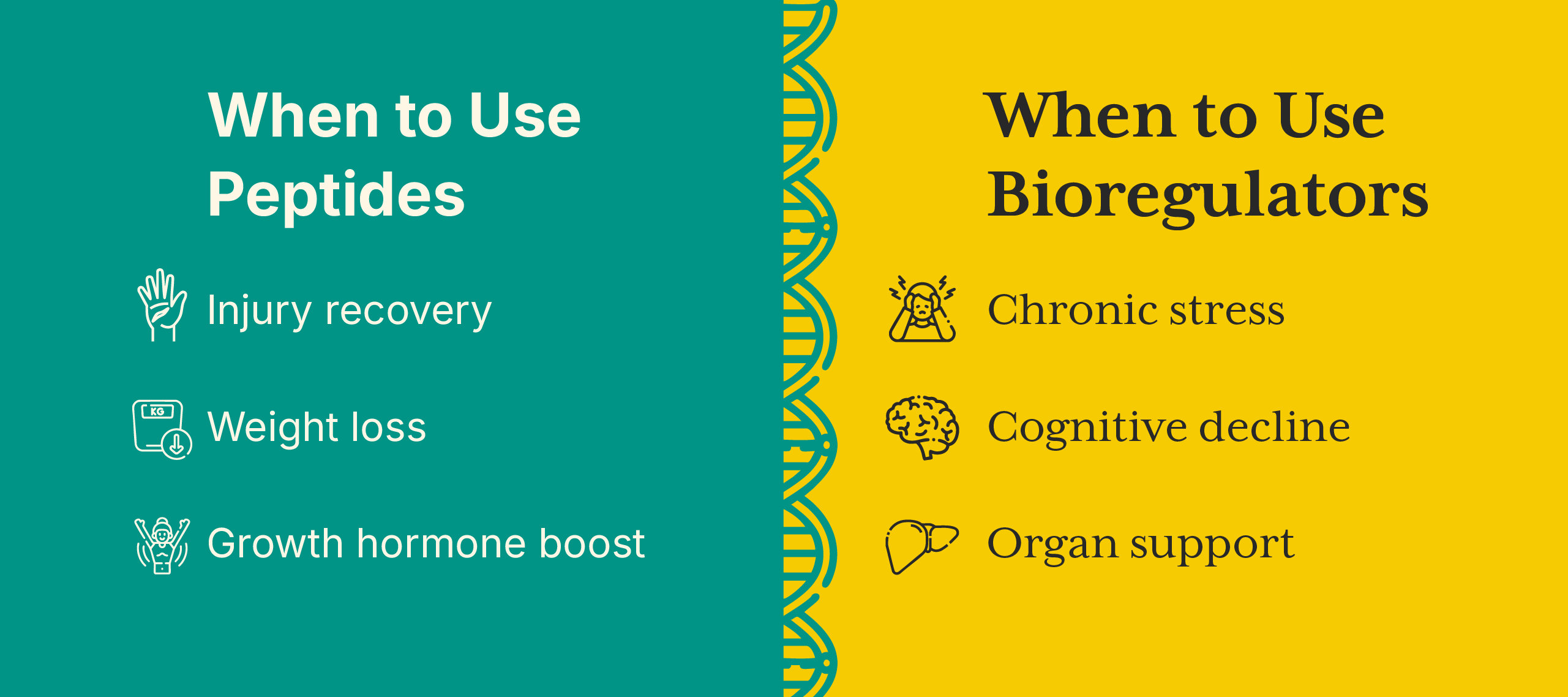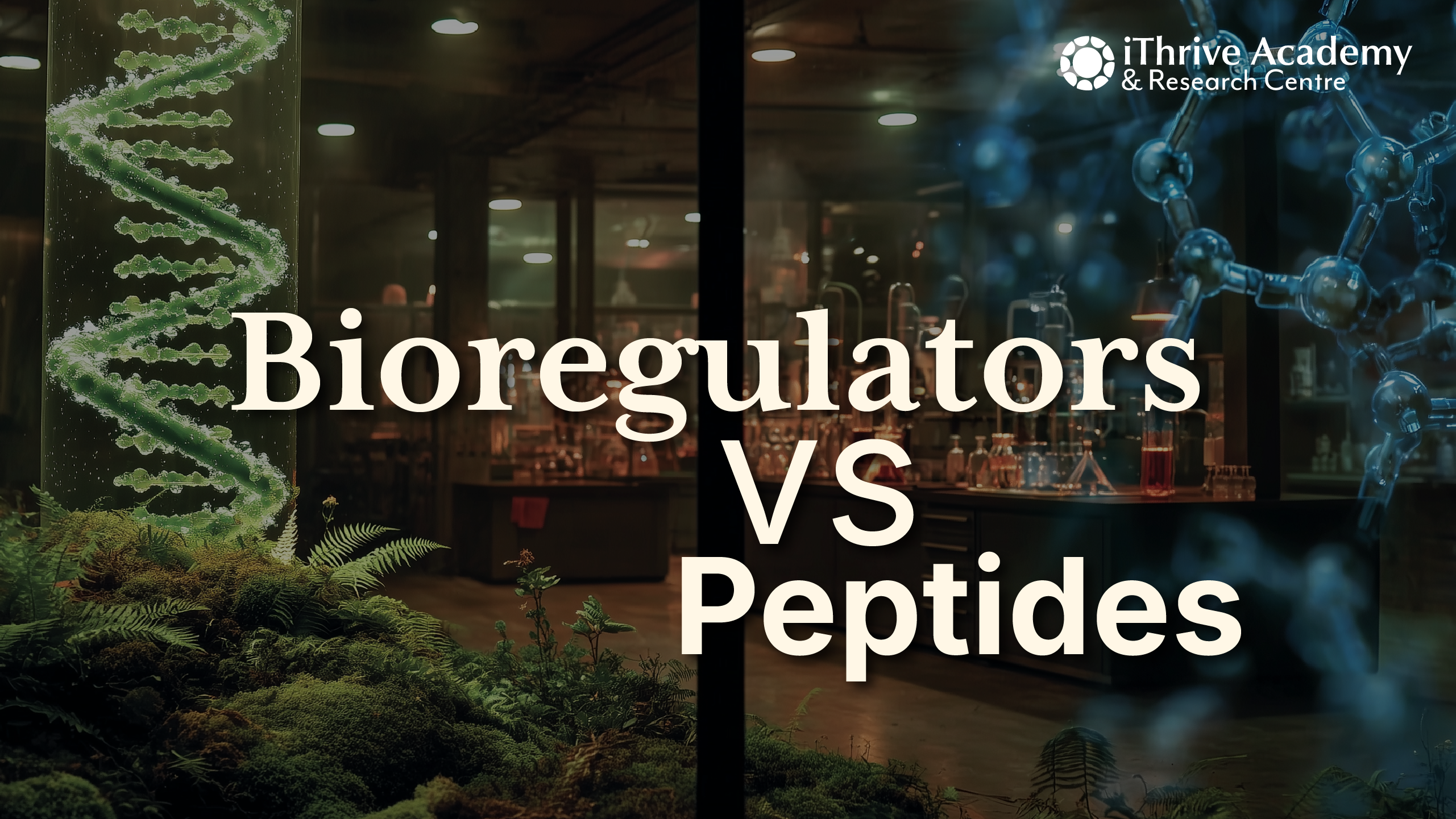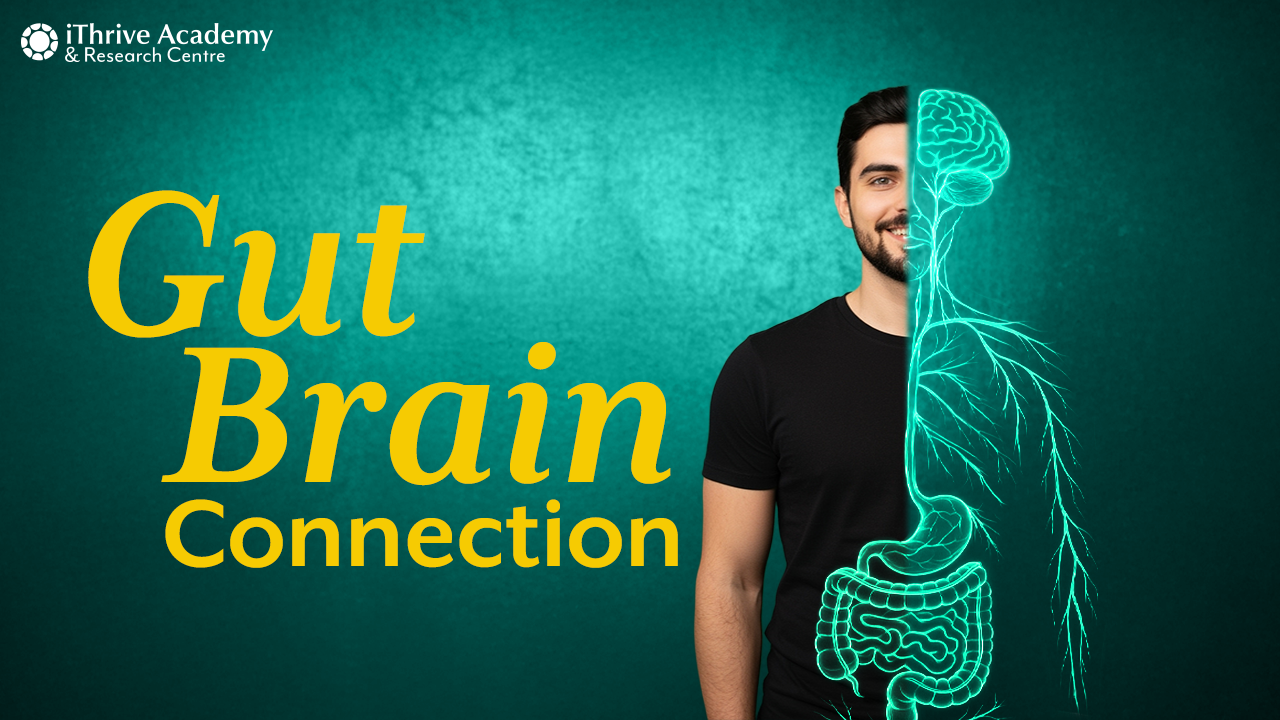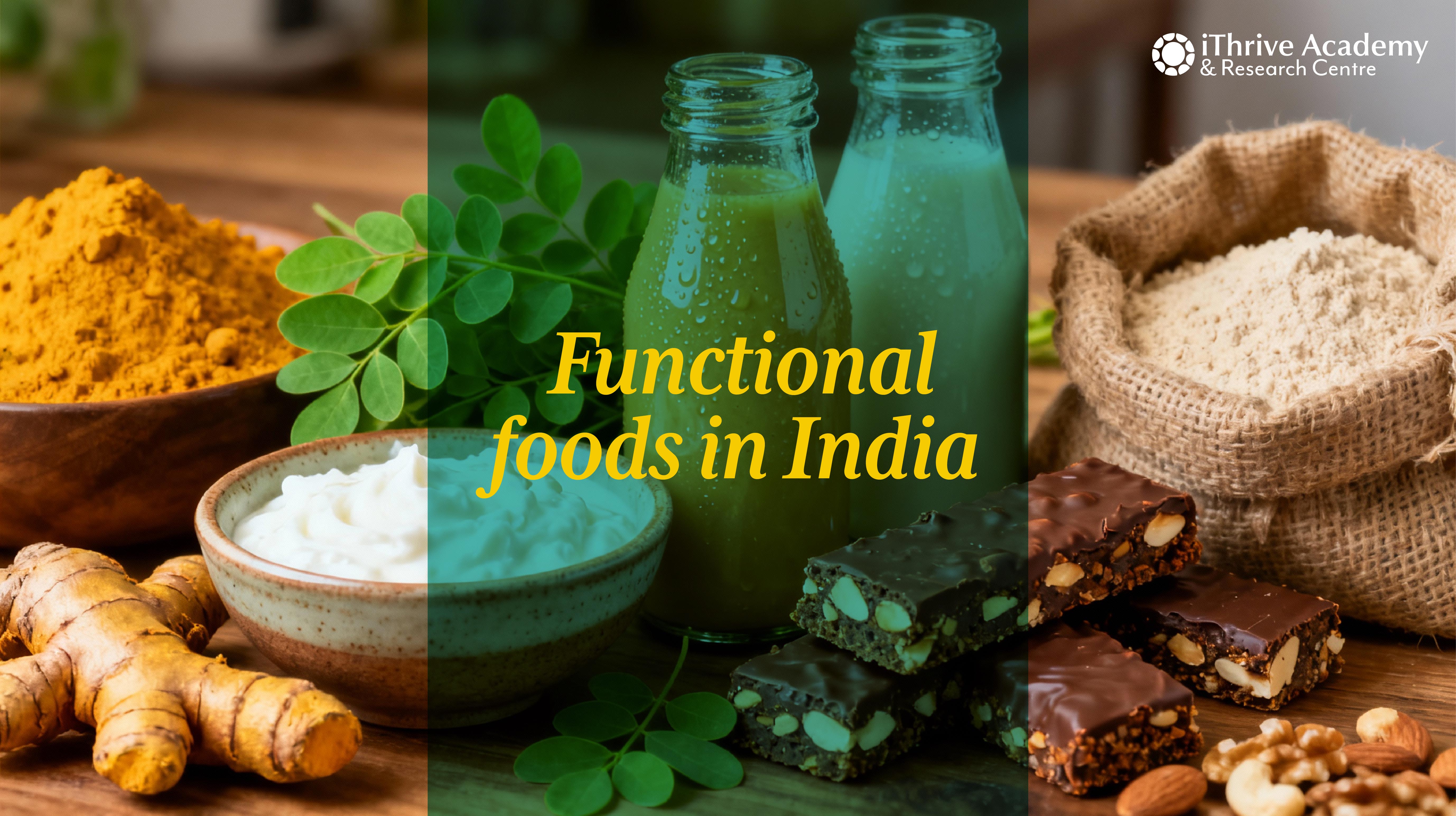Why is everyone suddenly talking about bioregulators and peptides?
If you have been following the wellness landscape lately, you have probably noticed the buzzwords like peptide therapy, anti-aging peptides, and cellular bioregulation. Clinics, bio hackers, and even longevity researchers are diving into these therapies to heal steadier, slow aging, and also improve resilience.
But here is where it gets more confusing.. People often consider “bioregulators” and “peptides” into the very same basket. Yes, both are small protein fragments that work at the cellular level, but they are far from identical.
You can think of peptides as powerful, broad tools.. a Swiss Army knife with maximum functions. Bioregulators are much like precision instruments, a finely tuned key designed to unlock one particular lock.
This blog will help you break down peptides vs bioregulators, understand their roles in anti-aging, disease prevention, cellular repair, and, most importantly, know when to use bioregulators over peptides.
What Exactly Are Peptides?
At their core, peptides are simply small chains of amino acids, anywhere from 2 to 50 of them linked together. They act as messenger molecules, binding to receptors and triggering processes inside your cells.
Size & Structure: 2 - 50 amino acids (sometimes even up to 100).
Mechanism: Signal cells to act, that boosts repair, stimulates growth, and balances metabolism.
Instances:
- BPC - 157 is beneficial for tissue and gut healing.
- GLP - 1 agonists (Semaglutide) is beneficial for weight loss and insulin sensitivity.
- Epitalon is an anti-aging peptide studied for telomere lengthening.
Peptides are like pressing the “accelerate” button. They push the cells and tissues into action, mostly dramatically and quickly. That’s why peptide therapy has suddenly become popular in various areas such as hormone support, injury recovery, and even weight loss.
But here is the catch: because they are potent, they sometimes come with a lot of risks. Some peptides need to be extremely injected, and misuse can cause receptor desensitization or other unwanted effects.
What Makes Bioregulators Different?

Now let’s shift to the more subtle, but equally powerful, bioregulators. These are a special class of short peptides in therapy often only 2 to 4 amino acids long. Their size makes it extremely efficient at slipping into the cell nucleus along with interacting with DNA directly.
Instead of shouting at cells to act, bioregulators whisper instructions, modifying genetic expressions, helping the body remember how to function properly.
Size & Structure
Just 2- 4 amino acids.
Mechanism
Epigenetic bioregulators that normalize gene expression.
Examples
• Cerluten – supports the brain, memory, and cognition.
• Chelohart – heart health bioregulator.
• Vladonix – strengthens the thymus and immunity.
Bioregulators don’t push the body; they restore balance. They’re like reminding a musician how to play their instrument instead of forcing them to play louder.
This is why bioregulator therapy is considered safe, gentle, and sustainable especially for chronic conditions, organ-specific support, and anti-aging.

When to Use Peptides
There are times when you need a quick push:
Injury recovery and Gut health
BPC-157 for tendon and ligament repair.
Weight loss & metabolic reset
GLP - 1 agonists such as Tirzepatide or Semaglutide.
Growth hormone optimisation
Sermorelin for recovery, sleep, as well as fat metabolism.
Anti-aging peptides
Epitalon for cell renewal and circadian rhythm.
Best for short-term, targeted effects under medical guidance.
When to Use Bioregulators
If your goal is gentle, long-term support for specific organs or systems, bioregulators are the better choice.
Chronic stress recovery
Vladonix (immune system).
Cognitive support
Cerluten (brain).
Thyroid health
Thyreogen.
Cardiac resilience
Chelohart (heart).
Muscle endurance
Gotratix.
Best for restoring cellular balance along with preventing age-related decline.
Beyond Molecules: Why Choosing the Right One Matters
The choice is not just about bioregulators vs peptides in anti-aging it is also about aligning therapy with the needs of your body.
• If you need a boost after an injury or for fat loss → choose peptides.
• If you want restoration of organ health, immunity, or cellular memory → choose bioregulators.
But remember: neither is a substitute for lifestyle. Before jumping into regenerative peptides or molecular bioregulators, your foundation must be solid: nutrition, sleep, movement, stress management.
This is where functional nutrition ties in beautifully. You can even explore our short course - Building Strong Foundations of Cellular Health with Peptides & Bioregulators which explains how these biomolecules interact with food, lifestyle, and long-term resilience.
The iThrive Approach: Education Before Intervention

At iThrive Academy, we believe that advanced therapies such as cellular bioregulation or peptide treatments only make sense when you understand the bigger picture of health. That’s why our programs integrate both science and application.
• In the iThrive Certified Functional Nutrition (iCFN) program, students explore how nutrition interacts with cellular pathways so you know when these advanced therapies are truly needed.
• In our short courses, we dive deep into anti-aging peptides, peptide vs protein metabolism, and bioregulator therapy, giving you tools to apply knowledge safely and effectively.
And our philosophy always rests on three pillars:
Pioneer - We go beyond trends, teaching the real science of peptides and epigenetic bioregulators.
Empower - We equip you with frameworks so you can guide yourself and others on when to use bioregulators over peptides.
Transform - We turn knowledge into practice, helping you use these tools not as shortcuts, but rather as a part of a holistic healing journey.
Final Thoughts
In a world full of wellness and longevity, it’s tempting to look out for shortcuts. But real healing only happens when you choose the right tool for the right purpose.
- Peptides give you prompt, targeted results such as a quick sprint.
- Bioregulators restore cellular harmony slowly like walking a marathon.
Both have a role in modern functional health. The secret lies in knowing when to sprint, when to walk, and when to simply rest and nourish.
At iThrive Academy, we are here to guide that very journey, further blending advanced science with ancient wisdom, and helping you master not just what peptides and bioregulators are, but how to utilize them responsibly to heal, thrive, and transform.









.jpg)






